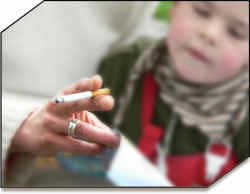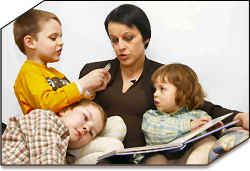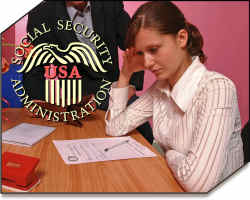 We want to thank Daniel Pollack, a professor at Yeshiva University’s School of Social Work in New York City and a frequent expert witness in child welfare cases for sending an article he published “Homeschooling and Child Protection”, Policy & Practice (Feb. 2012). The issue that he wrote about is an important one in the child welfare world and one that has hit home in real life recently in Dayton, Ohio. We have adapted this blog article in large part from Professor Pollack’s article.
We want to thank Daniel Pollack, a professor at Yeshiva University’s School of Social Work in New York City and a frequent expert witness in child welfare cases for sending an article he published “Homeschooling and Child Protection”, Policy & Practice (Feb. 2012). The issue that he wrote about is an important one in the child welfare world and one that has hit home in real life recently in Dayton, Ohio. We have adapted this blog article in large part from Professor Pollack’s article.
Homeschooling: What is it and why does it exist?
Homeschooling, defined as “parent-directed education that meets the requirements for regular school attendance,” has become much more common in the United States. As of 2007, there were more than 1.5 million students being homeschooled in the United States. When parents of homeschoolers are asked why they chose to homeschool their children, the most popular answers were concern about the school environment, desire to provide religious and moral training, and dissatisfaction with the academic instruction available at their schools. As it is becoming more popular, each state has regulated the practice of homeschooling, making rules and requirements to which parents must strictly adhere.


 Water. It can be so much fun, but oh so dangerous. The National Safe Kids Campaign (2004) reports that “drowning is the second leading cause of unintentional injury-related death among children ages 1–14 and the leading cause of unintentional injury-related death among children ages 1–4. The majority of drownings and near-drownings occur in residential swimming pools and in open water sites.” Furthermore, in 2004, “approximately 2,300 children ages 14 and under died from unintentional injuries that occurred in the home. Nearly 80 percent of these deaths were among children ages 4 and under.”
Water. It can be so much fun, but oh so dangerous. The National Safe Kids Campaign (2004) reports that “drowning is the second leading cause of unintentional injury-related death among children ages 1–14 and the leading cause of unintentional injury-related death among children ages 1–4. The majority of drownings and near-drownings occur in residential swimming pools and in open water sites.” Furthermore, in 2004, “approximately 2,300 children ages 14 and under died from unintentional injuries that occurred in the home. Nearly 80 percent of these deaths were among children ages 4 and under.” If you smoke cigarettes, there’s a good chance that at some time in your past you’ve made a pact with a friend who also smoked that the two of you were going to try to quit smoking together, but you just couldn’t hold up your end of the deal. In another attempt to quit smoking, maybe you’ve tried one of those “patches” but that didn’t do the trick either. Perhaps you’ve seen those controversial commercials on T.V. where disfigured long-time smokers describe the major health problems that smoking has caused to their bodies, but today you remain a smoker. Well, if you’re still a smoker, and you’ve tried repeatedly to give up the habit, the Family Law attorneys at Holzfaster, Cecil, McKnight & Mues may finally be able to provide you with the extra motivation you need to quit, especially if you are in a
If you smoke cigarettes, there’s a good chance that at some time in your past you’ve made a pact with a friend who also smoked that the two of you were going to try to quit smoking together, but you just couldn’t hold up your end of the deal. In another attempt to quit smoking, maybe you’ve tried one of those “patches” but that didn’t do the trick either. Perhaps you’ve seen those controversial commercials on T.V. where disfigured long-time smokers describe the major health problems that smoking has caused to their bodies, but today you remain a smoker. Well, if you’re still a smoker, and you’ve tried repeatedly to give up the habit, the Family Law attorneys at Holzfaster, Cecil, McKnight & Mues may finally be able to provide you with the extra motivation you need to quit, especially if you are in a  For those of you who follow our blog, you already know that local child psychologist Dr. Greg Ramey is a frequent contributor. Dr. Ramey is the vice president for outpatient services at Dayton Children’s and writes FamilyWise, a weekly
For those of you who follow our blog, you already know that local child psychologist Dr. Greg Ramey is a frequent contributor. Dr. Ramey is the vice president for outpatient services at Dayton Children’s and writes FamilyWise, a weekly  Any family law attorney, judge, or child custody expert will tell us that, except in unusual circumstances, during and following a divorce it is desirable for a child to have a strong relationship with both parents. It follows that the less contentious the divorce the better off are the children, the parents, and the department in charge of child support issues. Indeed, custody and support issues can unravel what might otherwise be an amicable divorce. One of the major problems that may arise after divorce is custodial interference with visitation. Many jurisdictions, including Ohio, have held that unreasonable interference with the noncustodial parent’s parental rights can even be grounds for a change of custody.
Any family law attorney, judge, or child custody expert will tell us that, except in unusual circumstances, during and following a divorce it is desirable for a child to have a strong relationship with both parents. It follows that the less contentious the divorce the better off are the children, the parents, and the department in charge of child support issues. Indeed, custody and support issues can unravel what might otherwise be an amicable divorce. One of the major problems that may arise after divorce is custodial interference with visitation. Many jurisdictions, including Ohio, have held that unreasonable interference with the noncustodial parent’s parental rights can even be grounds for a change of custody. If you are a recipient of Social Security Income or Social Security Disability Income and you are going through a divorce or dissolution, your first step should be to find an attorney who has a good working knowledge of social security income and social security disability income. Spousal support, child support, and property settlements are often the main issues in any divorce or dissolution. Not only does spousal support, child support and property settlements encompass a great deal of the divorce or dissolution proceeding, but when one receives these things as part of a global settlement or adjudication, and they are also receiving social security income, social security disability income, Medicare, or Medicaid, one can find that what they want and what they get can be often two very different things.
If you are a recipient of Social Security Income or Social Security Disability Income and you are going through a divorce or dissolution, your first step should be to find an attorney who has a good working knowledge of social security income and social security disability income. Spousal support, child support, and property settlements are often the main issues in any divorce or dissolution. Not only does spousal support, child support and property settlements encompass a great deal of the divorce or dissolution proceeding, but when one receives these things as part of a global settlement or adjudication, and they are also receiving social security income, social security disability income, Medicare, or Medicaid, one can find that what they want and what they get can be often two very different things. Have you ever wondered what might have happened to Cheeta if Tarzan and Jane had decided to split up? If Fred and Wilma had gone through a nasty divorce, which one would have gotten Dino? Remember Lassie? If Timmy’s parents, Ruth and Paul Martin, had divorced would Lassie’s barking, in an attempt to explain which party she wanted to live with, have even mattered to a judge?
Have you ever wondered what might have happened to Cheeta if Tarzan and Jane had decided to split up? If Fred and Wilma had gone through a nasty divorce, which one would have gotten Dino? Remember Lassie? If Timmy’s parents, Ruth and Paul Martin, had divorced would Lassie’s barking, in an attempt to explain which party she wanted to live with, have even mattered to a judge?